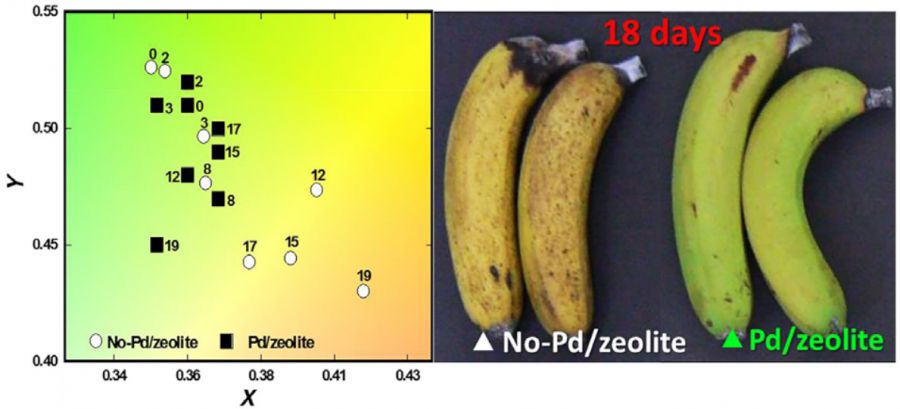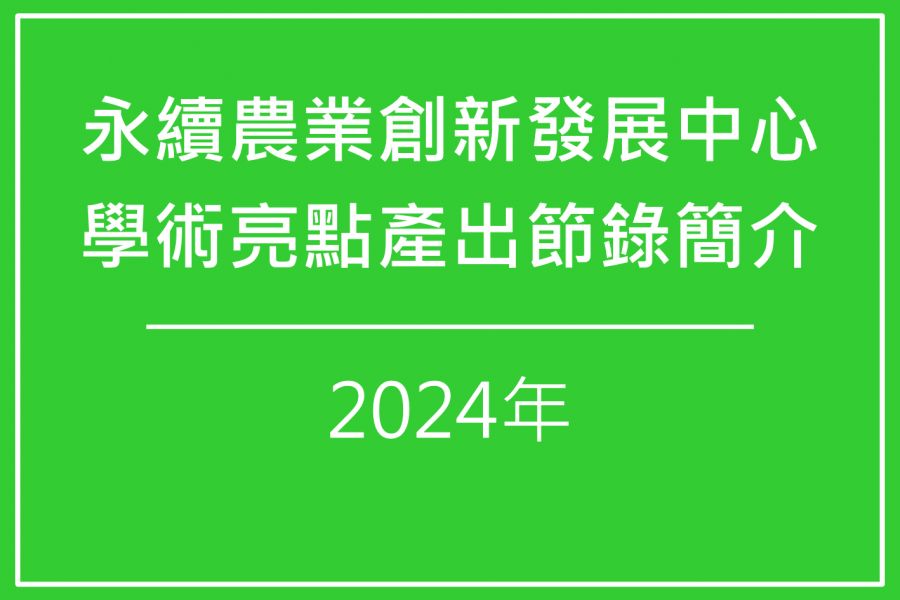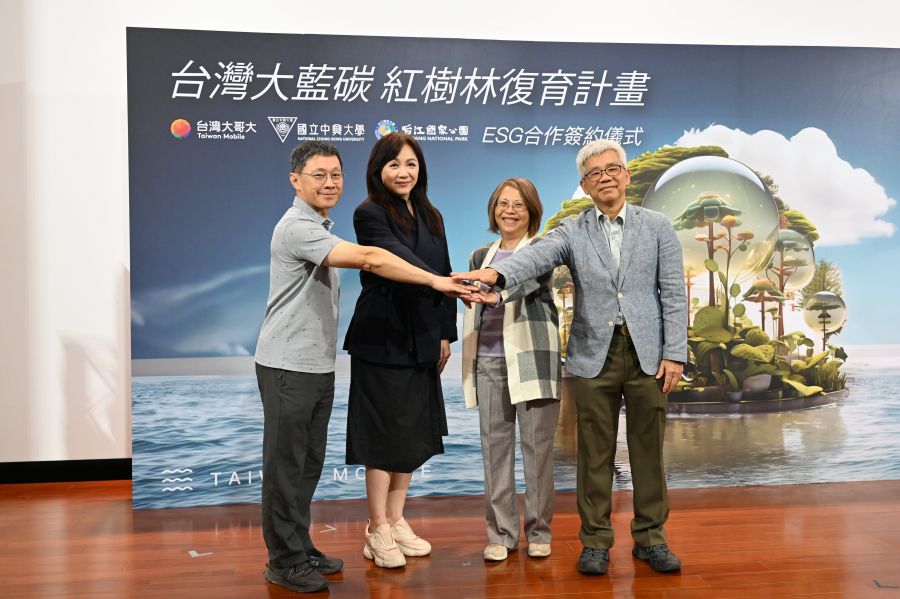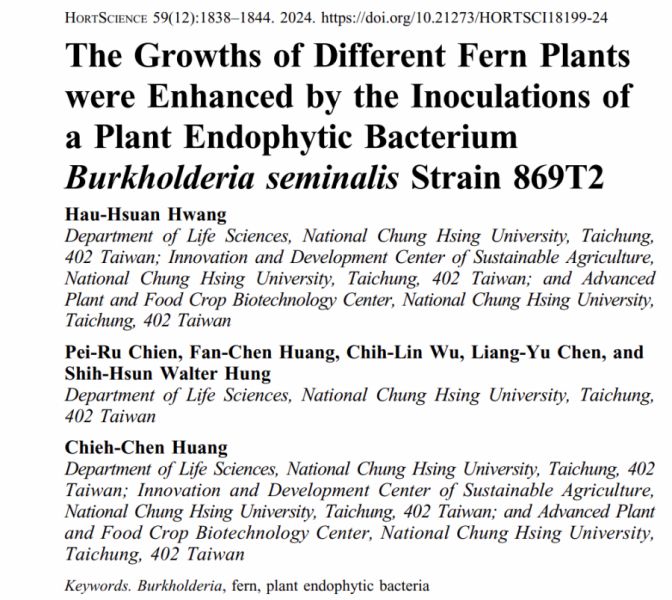| 論文篇名 | 英文:Application of palladium-modified zeolite for prolonging post-harvest shelflife of banana 中文:改質沸石在延長香蕉採收後保質期之應用 |
| 期刊名稱 | JOURNAL OF THE SCIENCE OF FOOD AND AGRICULTURE |
| 發表年份,卷數,起迄頁數 | 2019, 99, 3467-3474 |
| 作者 | Jing-Hua Tzeng, Chih-Huang Weng, Jenn‐Wen Huang, Ching‐Chang Shiesh, Yu-Hao Lin, Yao-Tung Lin*(林耀東) |
| DOI | 10.1002/jsfa.9565 |
| 中文摘要 | 香蕉適銷性受到成熟速度的限制。此研究目的是將可重複使用的材料應用於食品保鮮產業(food preservation industry)。通過浸漬法(impregnation)將鈀(Pd)摻入沸石製備奈米複合鈀(Pd)改質沸石(Pd/zeolite)。Pd/zeolite 之比表面積為475m2 g-1,其晶體結構類似於Y沸石。TEM圖像顯示Pd顆粒在多孔沸石載體上的分散。Pd/zeolite獨特地充當吸附劑和催化劑,甚至在達到突破點(breakthrough point)後仍能持續去除乙烯。為證明Pd/zeolite可重複使用,實驗結果顯示重複使用Pd/zeolite五次循環後,仍可保持99±0.8%之乙烯去除率。Pd/zeolite可以延遲香蕉成熟,並顯著提高香蕉的硬度和果皮顏色。Pd/zeolite具高效吸附劑/催化劑潛力,可有效用於蔬果收穫後時期乙烯脫除的實際應用。 |
| 英文摘要 | The marketability of banana is limited by the rapid rate of ripening. However, the traditional post‐harvest technologies may not be desirable. The aim of this study was to investigate the potential of a reusable material for the food preservation industry. The nanocomposite‐based palladium (Pd)‐modified zeolite (Pd/zeolite) was prepared by impregnating Pd into zeolite. Pd/zeolite had a Brunauer–Emmett–Teller dinitrogen specific surface area of 475 m2 g−1 with crystal structure similar to Y‐zeolite. Transmission electron microscopy images showed the dispersion of Pd particles over the multi‐pore zeolite support. Pd/zeolite uniquely acted as an adsorbent and a catalyst and was able to remove ethylene even after reaching breakthrough point. To prove Pd/zeolite is reusable, a 99 ± 0.8% ethylene removal efficiency still remained even after five consecutive cycles with repeated use of Pd/zeolite. The presence of Pd/zeolite significantly decreased the ethylene concentration during 18 days of storage at 20 ± 2 °C. Pd/zeolite could delay the ripening of banana and improve its firmness and the peel color significantly. Findings indicated that the as‐prepared Pd/zeolite is an effective adsorbent/catalyst with high potential for practical application in ethylene removal, especially for the post‐harvest period. © 2019 Society of Chemical Industry |
【學術亮點】改質沸石在延長香蕉採收後保質期之應用 2019-02-14

新穎材料農業:友善環境農業新穎材料研發與安全評估【土環系林耀東特聘教授】






